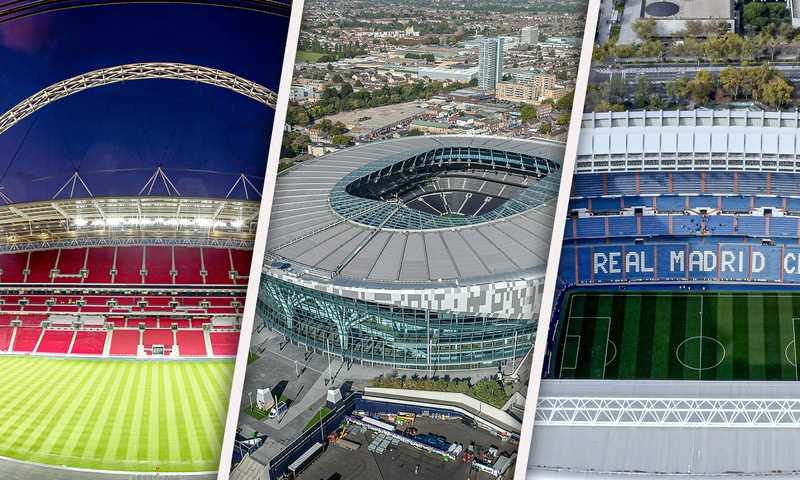Stadiums have always been central to the culture of football. They are places where fans gather to cheer for their teams, creating electrifying atmospheres and unforgettable memories. Over the years, stadium designs have evolved from simple stands to multi-functional, state-of-the-art arenas that reflect modern architecture. These advancements have brought with them significant costs, making some stadiums among the most expensive infrastructures in sports history.
Here is a list of the ten most expensive football stadiums ever built, exploring their unique features and the events they host.
1. Yankee Stadium – £1.5 Billion
Located in the United States, Yankee Stadium tops the list as the most expensive stadium ever constructed. While primarily known as the home of Major League Baseball’s New York Yankees, it also hosts football matches for New York City FC. The stadium’s capacity can expand from 28,000 to over 45,000. Despite its significant cost, it does not meet FIFA criteria for hosting international football matches, which has drawn criticism from some quarters.
2. Mercedes-Benz Stadium – £1 Billion
The Mercedes-Benz Stadium in Atlanta, USA, is a modern marvel known for its innovative design and multi-functional use. It serves as the home ground for Atlanta United (MLS) and the Atlanta Falcons (NFL). With a seating capacity of 71,000, it’s set to host matches during the FIFA World Cup in 2026. Its retractable roof and sleek architecture make it one of the most visually impressive stadiums globally.
3. Singapore National Stadium – £1 Billion
Opened in 2014, the Singapore National Stadium is part of the Singapore Sports Hub and is celebrated for its advanced technology. The venue features a fully retractable roof and a seating capacity of 55,000. Though smaller in size compared to others on this list, it stands out for its innovative design and serves as a hub for multiple sports and entertainment events.
4. Tottenham Hotspur Stadium – £1 Billion
Opened in 2019, the Tottenham Hotspur Stadium is a testament to modern engineering. Designed to host not just football but also NFL games, it features an interchangeable pitch and state-of-the-art facilities. With a capacity of 62,850, this stadium is pivotal to Tottenham Hotspur’s revenue generation and global branding. Its design and functionality have set new standards for stadium construction.
5. Wembley Stadium – £1 Billion
The iconic Wembley Stadium in London is a symbol of English football. With a capacity of 90,000, it’s the largest stadium in England. Known for its distinct arch, which is illuminated during events, Wembley hosts England’s national football team matches, FA Cup finals, and major international tournaments. It’s also a popular venue for concerts and other large-scale events, making it one of the most versatile stadiums in the world.
6. Olympic Stadium – £1 Billion
Nicknamed the “Big O,” the Olympic Stadium in Montreal, Canada, was built for the 1976 Summer Olympics. Its high construction cost earned it the moniker “Big Owe.” After the Olympics, it was repurposed for baseball and football, with artificial turf installed to accommodate professional teams. Its unique roof design remains a standout feature of this Canadian landmark.
7. Estadio Nacional – £600 Million
Located in Brasília, Brazil, the Estadio Nacional is the country’s second-largest stadium, with a capacity of over 69,000. It played a key role in hosting the Confederations Cup in 2013 and the FIFA World Cup in 2014. Known for its vibrant atmosphere, this stadium is a hub for South American football and a symbol of Brazilian passion for the sport.
8. Santiago Bernabéu – £500 Million
The Santiago Bernabéu, home to Real Madrid, is one of the most famous stadiums in world football. Originally not among the most expensive, it underwent significant renovations to modernize its facilities, including the addition of a retractable roof. With a capacity of 81,000, the Bernabéu is a fortress for Real Madrid, especially during European competitions, where the atmosphere is electric.
9. Krestovsky Stadium – £500 Million
Also known as the Saint Petersburg Stadium, the Krestovsky Stadium in Russia is designed to resemble a spaceship. Built for the 2018 FIFA World Cup, it has a capacity of 68,000 and has hosted major tournaments, including the FIFA Confederations Cup and Euro 2020. The stadium’s design and atmosphere make it one of the most unique venues in the world.
10. London Stadium – £486 Million
Originally built for the 2012 London Olympics, the London Stadium is now home to Premier League side West Ham United. It has a capacity of 66,000 for football matches and can expand to 80,000 for other events. While West Ham’s move from their traditional Boleyn Ground to this modern arena was seen as a step forward, some fans argue that the stadium lacks the intimate atmosphere of their old home.
The Evolution of Modern Stadiums
Stadium construction in the modern era reflects a shift towards multi-purpose venues that combine sports, entertainment, and technology. These arenas are designed to maximize revenue streams through events beyond football, such as concerts, American football, and other sports. Features like retractable roofs, interchangeable pitches, and state-of-the-art facilities showcase how stadiums are evolving to meet the demands of a global audience.
Impact on Football
While these expensive stadiums signify progress and ambition, they also spark debates about priorities in sports infrastructure. Critics argue that the high costs could be redirected towards community development or grassroots football programs. Nonetheless, these venues stand as architectural and cultural icons, enhancing the experience for fans and players alike.
In conclusion, the ten most expensive stadiums highlight the blend of tradition and innovation in football. They are more than just venues; they are symbols of the sport’s global appeal and the advancements shaping its future.


